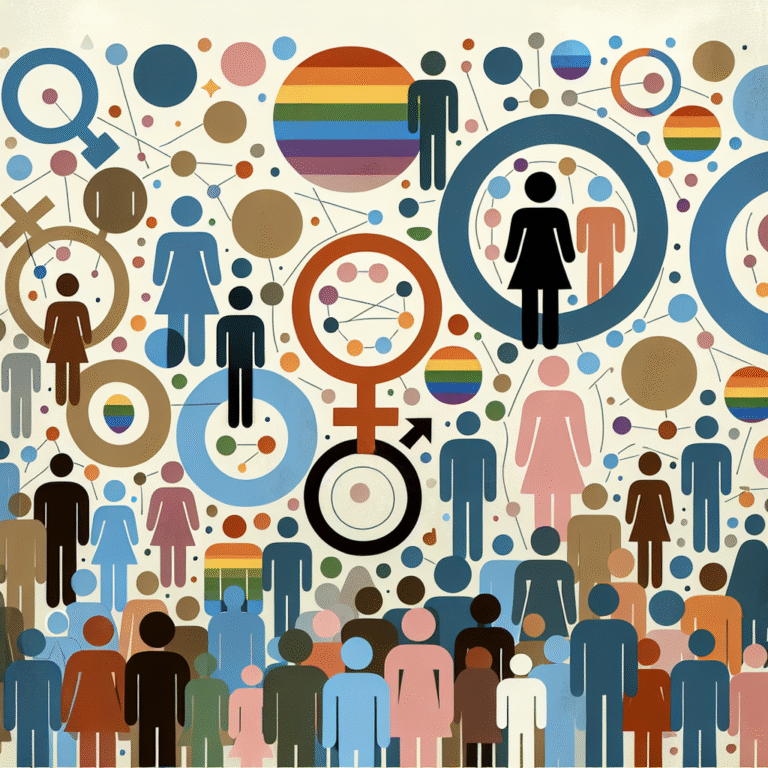
Introduction
Imagine walking into a boardroom where the gender representation is a perfect parity. Decisions are made collectively, ideas are shared freely, and innovation thrives without barriers. This type of environment is what shattering the glass ceiling—and redefining gender roles in the workplace—can achieve. The relevance of this topic resonates now more than ever, as organizations across the globe strive to dismantle outdated paradigms and cultivate inclusive workplaces. Gender roles in the workplace not only shape individual career trajectories but also reflect broader societal values.
In this comprehensive guide, we will delve into the evolution of gender roles in the workplace, illustrating the barriers that have traditionally held women back, while also highlighting modern strategies to encourage equity. Through case studies, data analysis, and actionable insights, we will explore how shattering the glass ceiling is not just beneficial for women, but for organizations and society as a whole. Join us on this enlightening journey as we equip you with the knowledge and tools to champion gender equality in your workplace.
Understanding Gender Roles in the Workplace
Historical Context
Gender roles in the workplace have deep historical roots. Traditionally, certain jobs were perceived as "men’s work," such as leadership positions, engineering, and certain trades, while roles deemed suitable for women often revolved around support and caregiving. This patriarchal setup has economics, social structures, and educational systems entrenched to uphold these outdated beliefs.
Case Study: The Women’s Liberation Movement
The Women’s Liberation Movement of the 1960s and 1970s was pivotal in challenging these established gender roles. Advocating for equal rights in employment, education, and reproductive rights, the movement helped to further open doors for women in various fields. Women began entering professions previously dominated by men, thus initiating a gradual yet significant shift in workplace dynamics.
Current Landscape: Statistics and Trends
Despite the advances made, the statistics still paint a troubling picture.
| Metric | Male (%) | Female (%) |
|---|---|---|
| Executive Leadership Positions | 75 | 25 |
| STEM Fields | 74 | 26 |
| Management Roles | 60 | 40 |
| Board Memberships | 66 | 34 |
As illustrated in the table above, there remains a stark disparity in gender representation across various sectors. Understanding these numbers is crucial for organizations aiming to foster a diverse workforce.
Breaking Down the Glass Ceiling
Barriers to Advancement
1. Bias and Stereotyping
Unconscious bias is often an insidious factor that perpetuates gender roles in the workplace. Research shows that both men and women can harbor biases that systematically disadvantage female employees. For instance, studies reveal that women may be less likely to be considered for leadership roles due to stereotypes associating masculinity with assertiveness, confidence, and decisiveness.
2. Work-Life Balance Dilemmas
Women frequently face the challenge of balancing personal and professional obligations. The idea that women are primarily responsible for household and caregiving duties can deter them from pursuing leadership roles or higher education opportunities.
Case Study: Google’s Diversity Initiatives
Google embarked on a mission to confront these biases through its Project Aristotle, which focused on creating strong teams. By encouraging openness and inclusiveness, Google shifted its internal culture, resulting in better team dynamics and representation in leadership positions.
Strategies to Shatter the Glass Ceiling
1. Training and Awareness Programs
One effective approach to dismantling gender biases is the implementation of diversity training programs. These workshops should focus on raising awareness of unconscious bias and its impact on organizational culture.
2. Mentorship and Sponsorship
Creating formal mentoring programs that pair women with established leaders can foster growth and resilience in female employees. Sponsorship, where senior figures actively advocate for and promote junior talent, can significantly increase women’s advancement.
Case Study: Deloitte’s Women’s Leadership Program
Deloitte’s leadership program focused on identifying and nurturing high-potential women within the company. By combining mentorship with targeted leadership training, Deloitte successfully increased the number of women in senior roles by 20% over three years.
The Role of Policy in Advancing Gender Equity
Legislative Measures
Government policies play a crucial role in shattering the glass ceiling. Legislation aimed at promoting equal pay, parental leave, and workplace accommodations can significantly advance gender equity.
3. Equal Pay Policies
Laws mandating equal pay for equal work can drive significant changes in the corporate landscape. Organizations that prioritize pay equity often attract top-tier talent and foster greater loyalty among employees.
4. Family Leave Policies
Robust family leave policies not only support women but also encourage men to take an active role in parenting, challenging traditional gender roles.
Case Study: Sweden’s Parental Leave Policy
Sweden has some of the most progressive parental leave policies worldwide, allowing both mothers and fathers to share leave equally. This model has not only improved child well-being but also increased participation of women in the workforce.
The Impact of Leadership on Gender Roles
Leading by Example
Organizational culture is often shaped by its leaders. When women are in leadership roles, they often advocate for policies that support diversity and inclusion.
1. Setting Clear Diversity Goals
Leaders should set clear, measurable diversity goals for their teams. These goals provide a framework for accountability and can shift organizational culture toward a more inclusive environment.
2. Inclusivity in Hiring Practices
Implementing blind hiring practices can help counteract bias in recruitment. By focusing on skills rather than gender, organizations can increase the likelihood of hiring diverse candidates.
Case Study: Unilever’s Commitment to Diversity
Unilever has committed to ensuring that 50% of its new hires globally are women. By aligning its recruiting practices with this goal, Unilever has significantly diversified its workforce and enhanced company performance.
Future Trends: The Evolving Gender Roles in the Workplace
The Rise of Remote Work
The COVID-19 pandemic accelerated the shift towards remote work, offering flexibility that can particularly benefit women. The ability to work from home may help reduce the burden of traditional gender roles associated with caregiving.
Technology and Gender Equity
As artificial intelligence and automation redefine the job landscape, there is an opportunity to create a more equitable environment. By prioritizing gender diversity in tech development, companies can ensure that new technologies cater to diverse user needs.
Conclusion
Shattering the glass ceiling and redefining gender roles in the workplace is not solely a women’s issue but a societal imperative. It’s essential for fostering innovation, enhancing productivity, and creating a fairer work environment. By addressing the barriers and implementing supportive initiatives, organizations can harness the collective potential of their workforce.
As we move forward, it is vital for individuals, leaders, and policymakers to remain vigilant in their quest for equity. Each effort contributes to a larger movement that not only benefits women but the entire ecosystem of workplaces. Let’s champion these changes, embrace the shift, and pave the way toward a more inclusive future.
FAQs
1. What is the glass ceiling?
The glass ceiling is an invisible barrier that prevents women from advancing to senior leadership positions in organizations, even though they may be qualified and capable of doing so.
2. How can organizations promote gender equality?
Organizations can promote gender equality by implementing diversity training, mentorship programs, equal pay policies, and flexible work arrangements.
3. What role do men play in shattering the glass ceiling?
Men play a critical role by advocating for gender equality, supporting women’s professional growth, and taking an active role in family responsibilities.
4. Why is diversity important in the workplace?
Diversity enhances innovation, improves problem-solving, and leads to better decision-making, ultimately benefiting the bottom line of organizations.
5. How can I advocate for myself in the workplace?
You can advocate for yourself by seeking mentorship, setting clear career goals, advocating for equal pay, and emphasizing your achievements during performance reviews.
Let’s continue to challenge the norms and shatter those ceilings—together, we can foster a workplace where everyone thrives.














